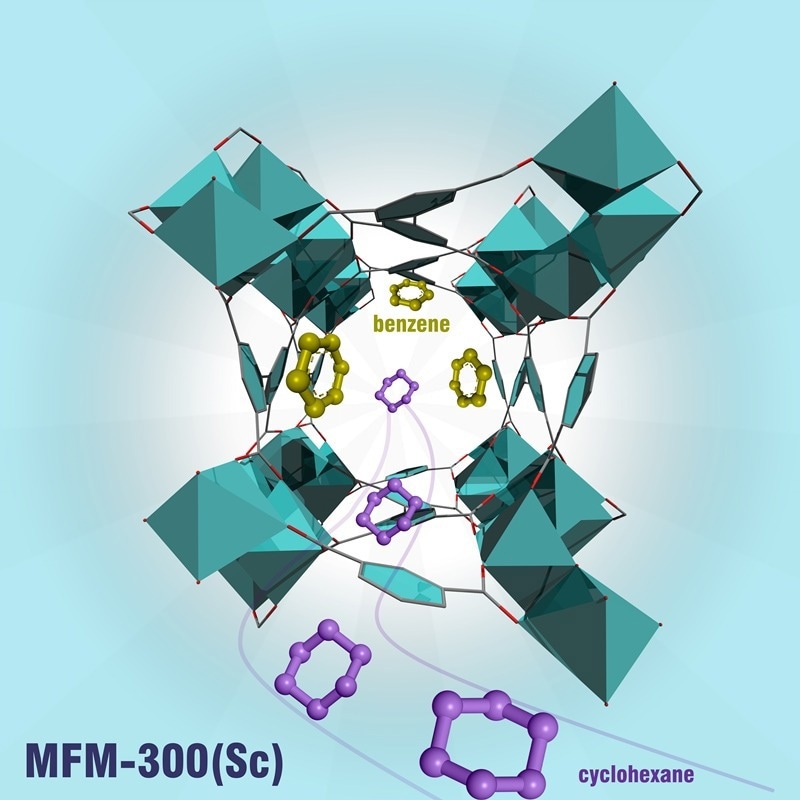A series of new stable, porous materials that capture and isolate benzene have been developed under the guidance of researchers at The University of Manchester.

Image Credit: The University of Manchester
Benzene is a volatile organic compound (VOC) and is also a significant feedstock for the production of several fine chemicals, including cyclohexane. However, it also poses a severe health threat to humans when it escapes into the air and has been identified as a serious air pollutant.
The new study illustrates the high adsorption of benzene at low pressures and concentrations and the efficient isolation of cyclohexane and benzene. It was possible to achieve this through the design and successful production of two families of stable metal-organic framework (MOF) materials, termed MFM-300 and UiO-66.
Such highly porous materials are composed of metal nodes coupled by functionalized organic molecules that serve as struts to develop 3-dimensional lattices integrating empty channels into which volatile compounds could enter.
VOCs, like benzene, are common indoor air pollutants, displaying increasing emissions from anthropogenic activities and leading to various environmental issues. Also, they have been associated with millions of premature deaths annually. Benzene is a highly toxic VOC and is categorized by the World Health Organization as a Group 1 carcinogen to humans.
The really exciting thing about these materials is that they allow us not only to capture and remove benzene from the air, but also to separate benzene from cyclohexane, which is an important industrial product often prepared from benzene.
Martin Schröder, Study Lead Author and Professor, The University of Manchester
Schröder added, “Because of the small difference in their boiling points (just 0.6 ℃) the separation of benzene and cyclohexane is currently extremely difficult and expensive to achieve via distillation or other methods”.
Schröder is the lead author of the study, which was published in the journal Chem.
Conventional adsorbents, like activated zeolites and carbons, are often subjected to structural disorders which could limit their effectiveness in capturing benzene. Also, this new research reports an extensive study of the adsorption of cyclohexane and benzene in such ultra-stable materials to provide deeper insight into why and how they tend to work.
The crystalline nature of MOF materials enables the direct visualization of the host-guest chemistry at the atomic scale using advanced diffraction and spectroscopic techniques. Such fundamental understanding of the structure-property relationship is crucial to the design of new sorbent materials showing improved performance in benzene capture.
Sihai Yang, Study Lead Author and Professor, The University of Manchester
Journal Reference:
Han, Y., et al. (2023) Control of the pore chemistry in metal-organic frameworks for efficient adsorption of benzene and separation of benzene/cyclohexane. Chem. doi.org/10.1016/j.chempr.2023.02.002